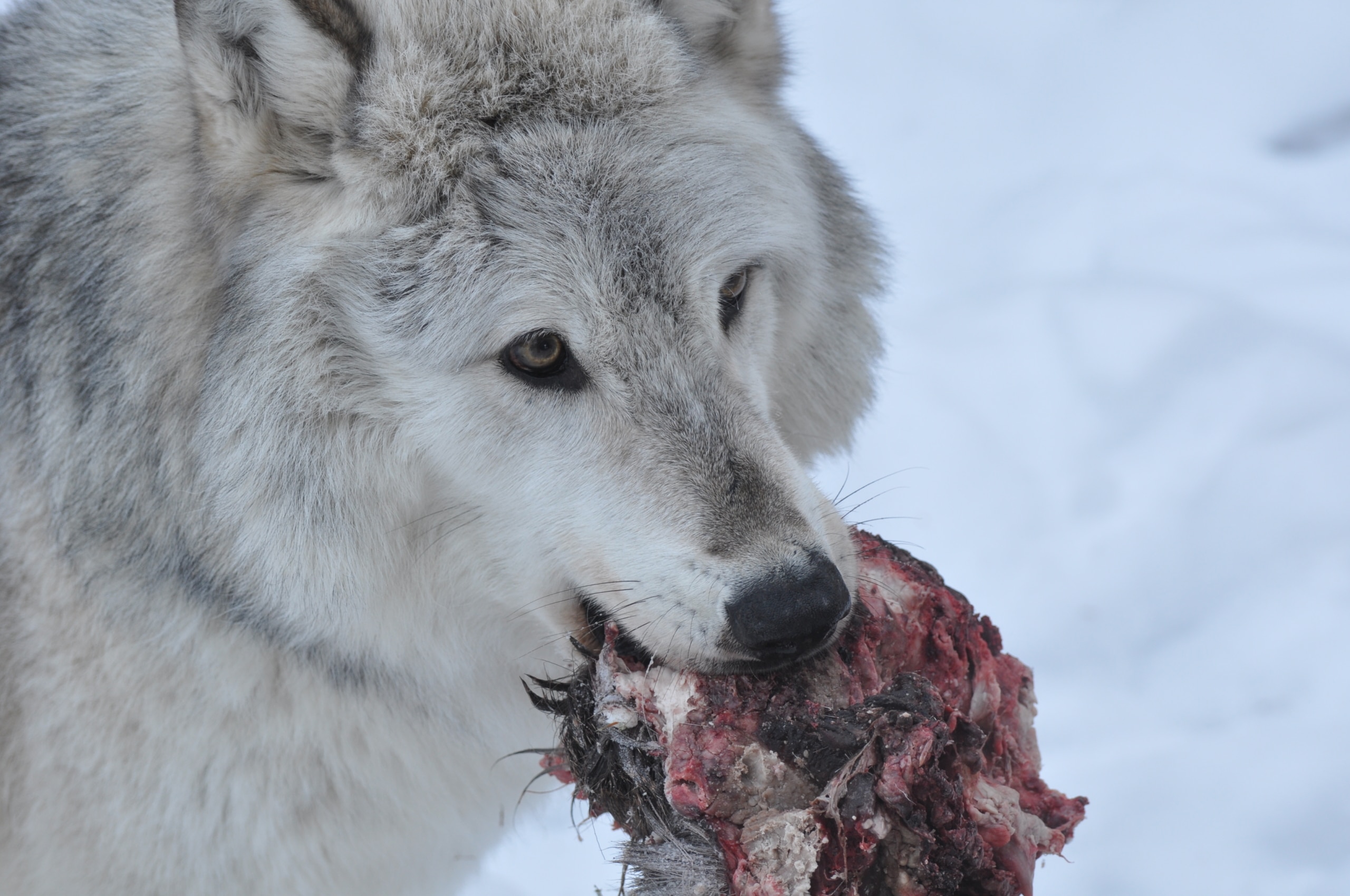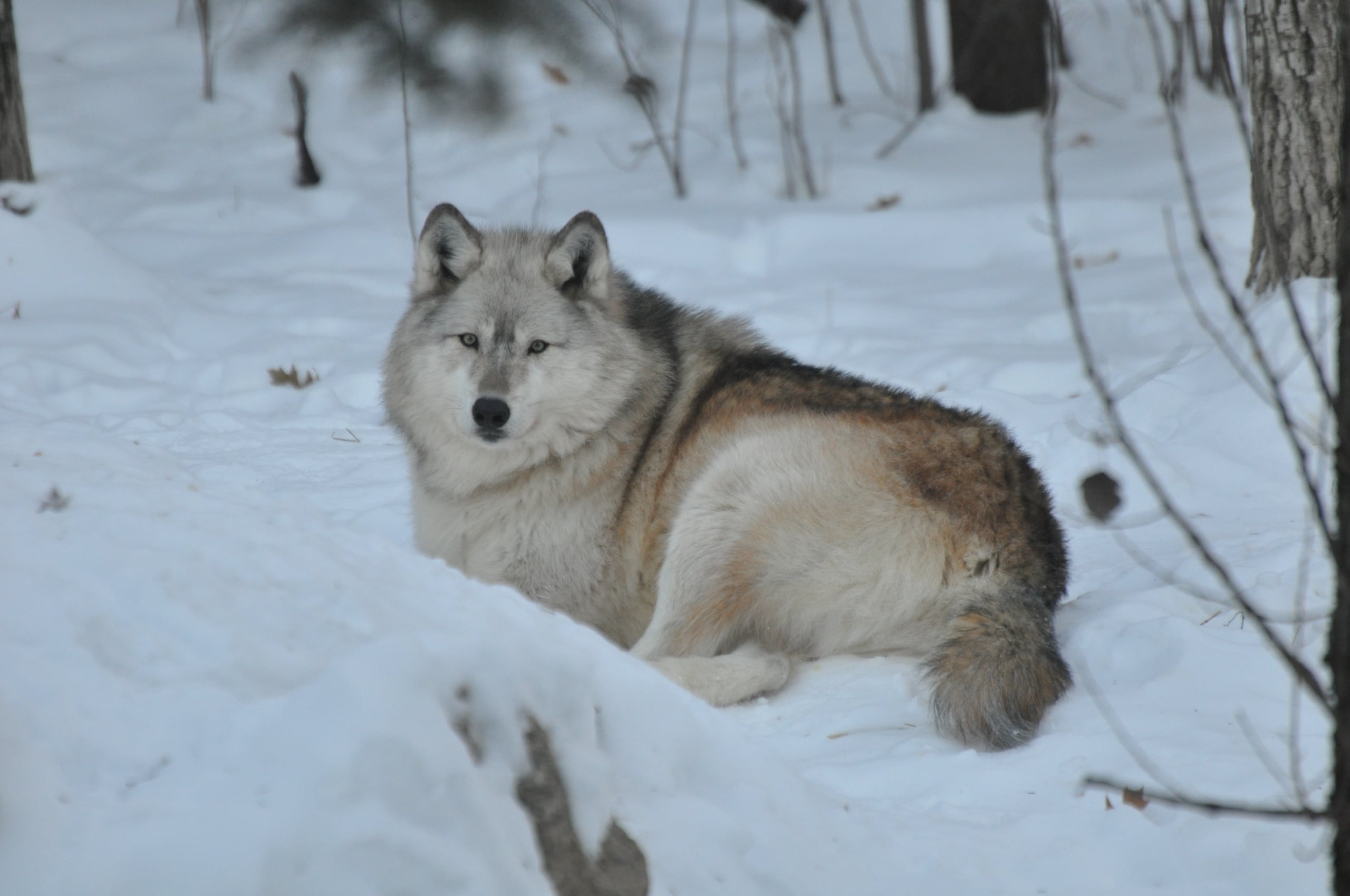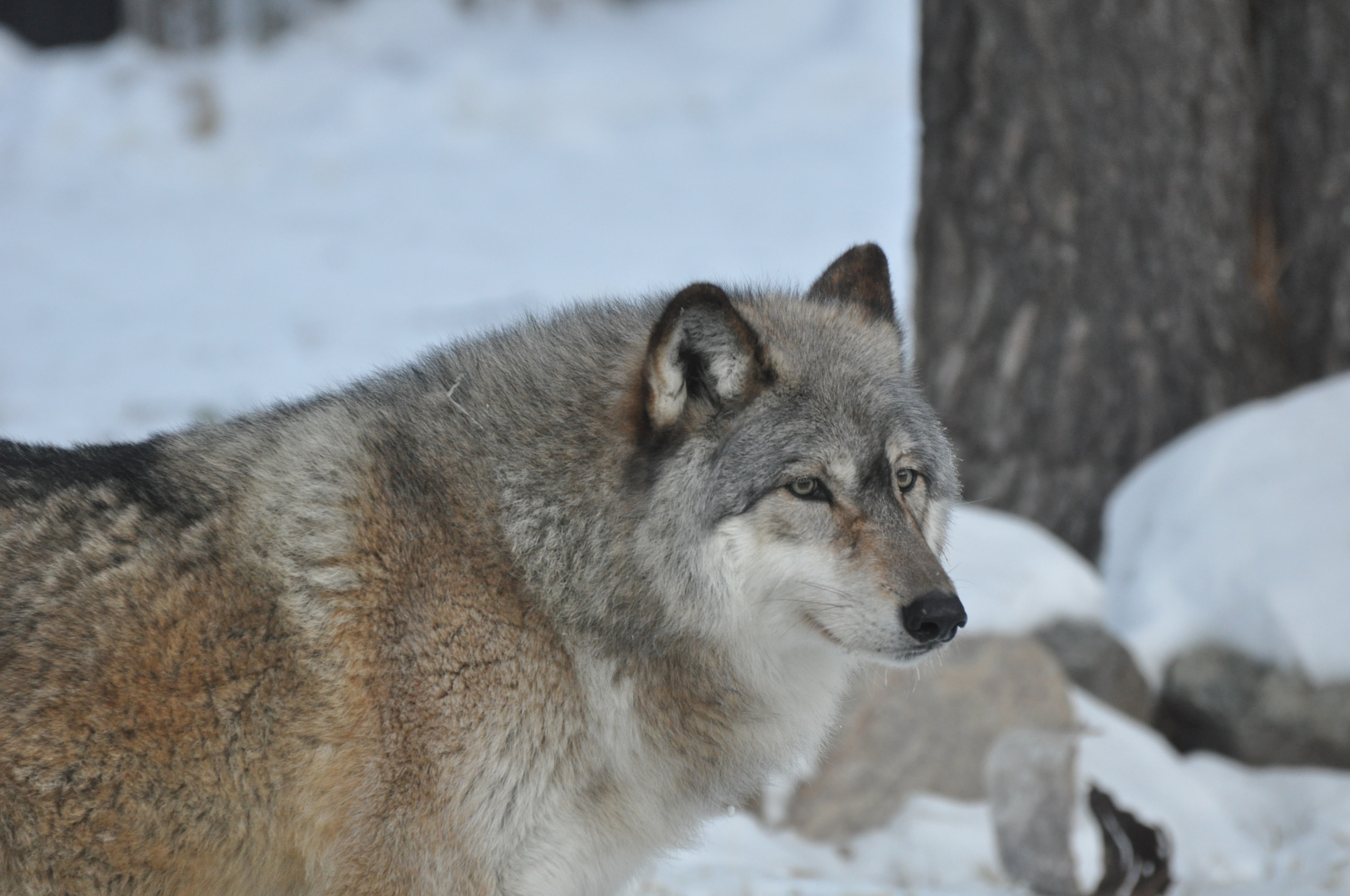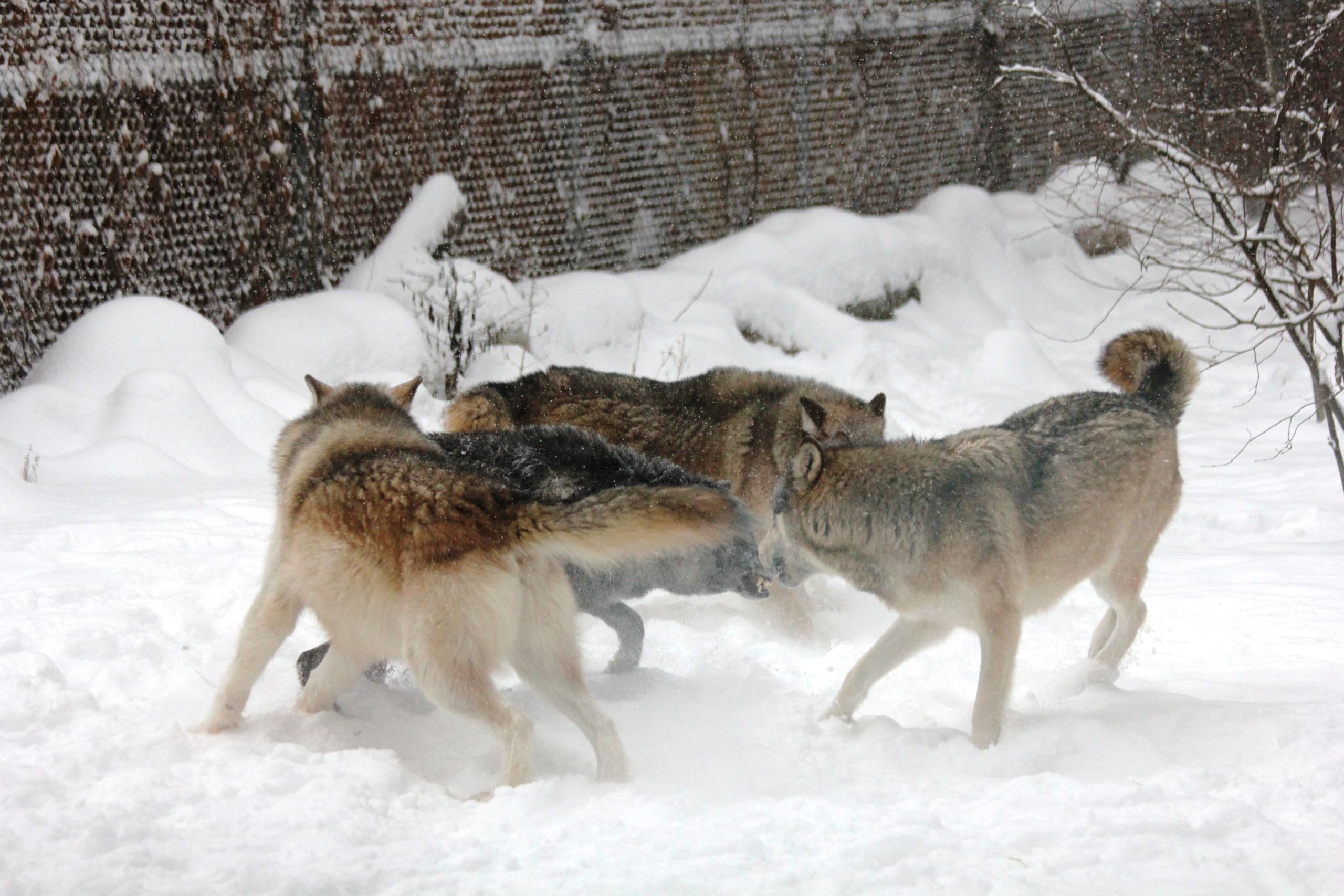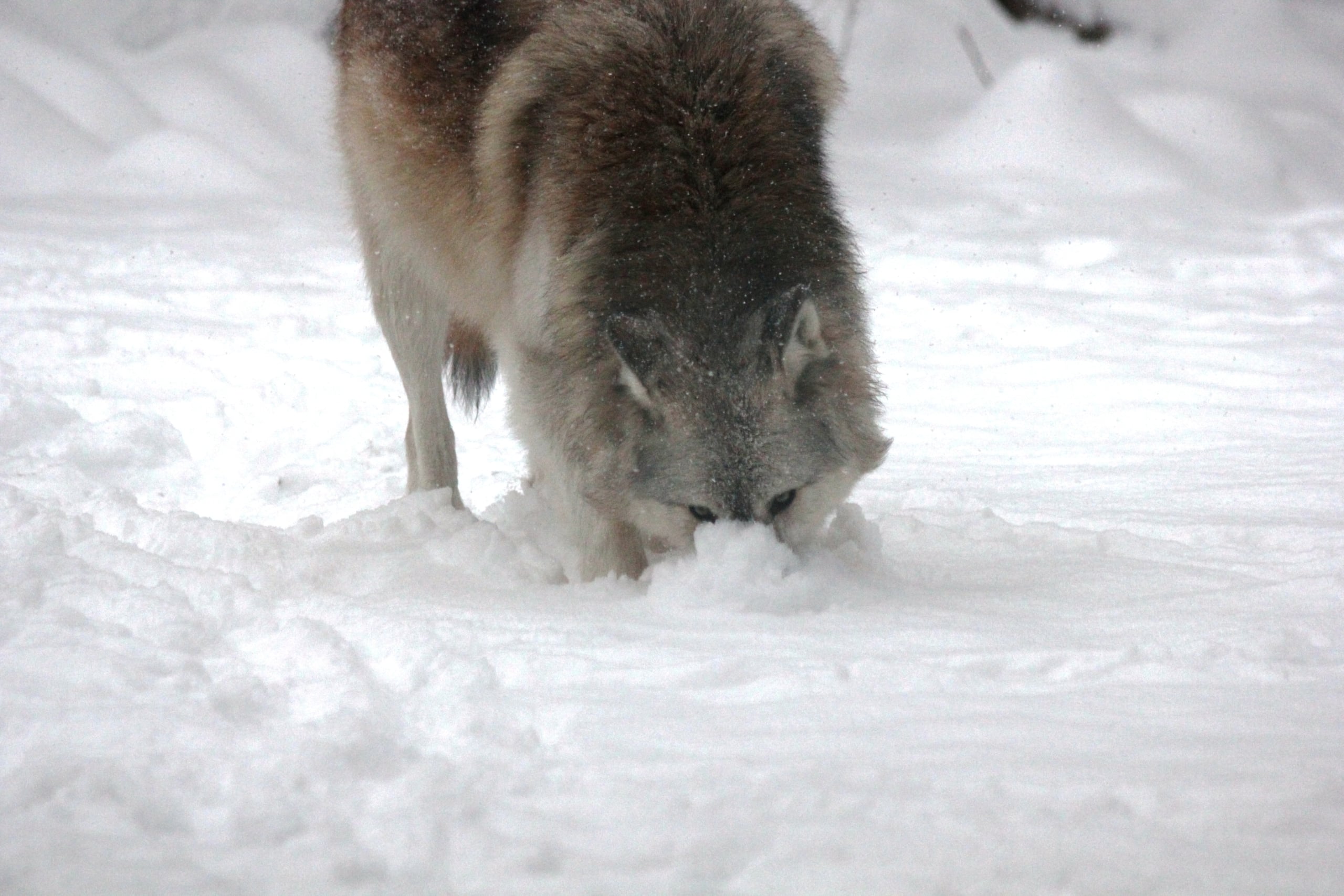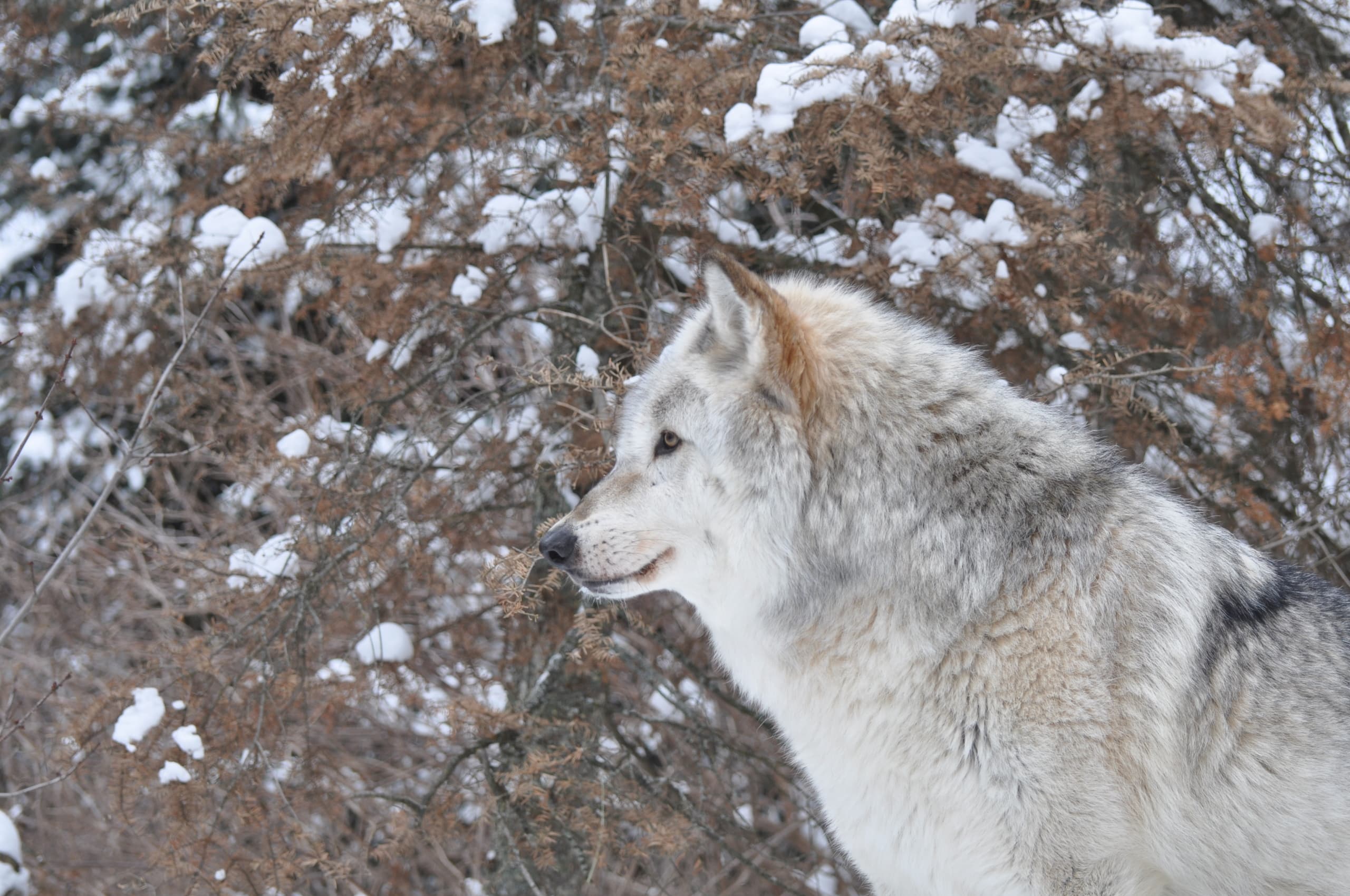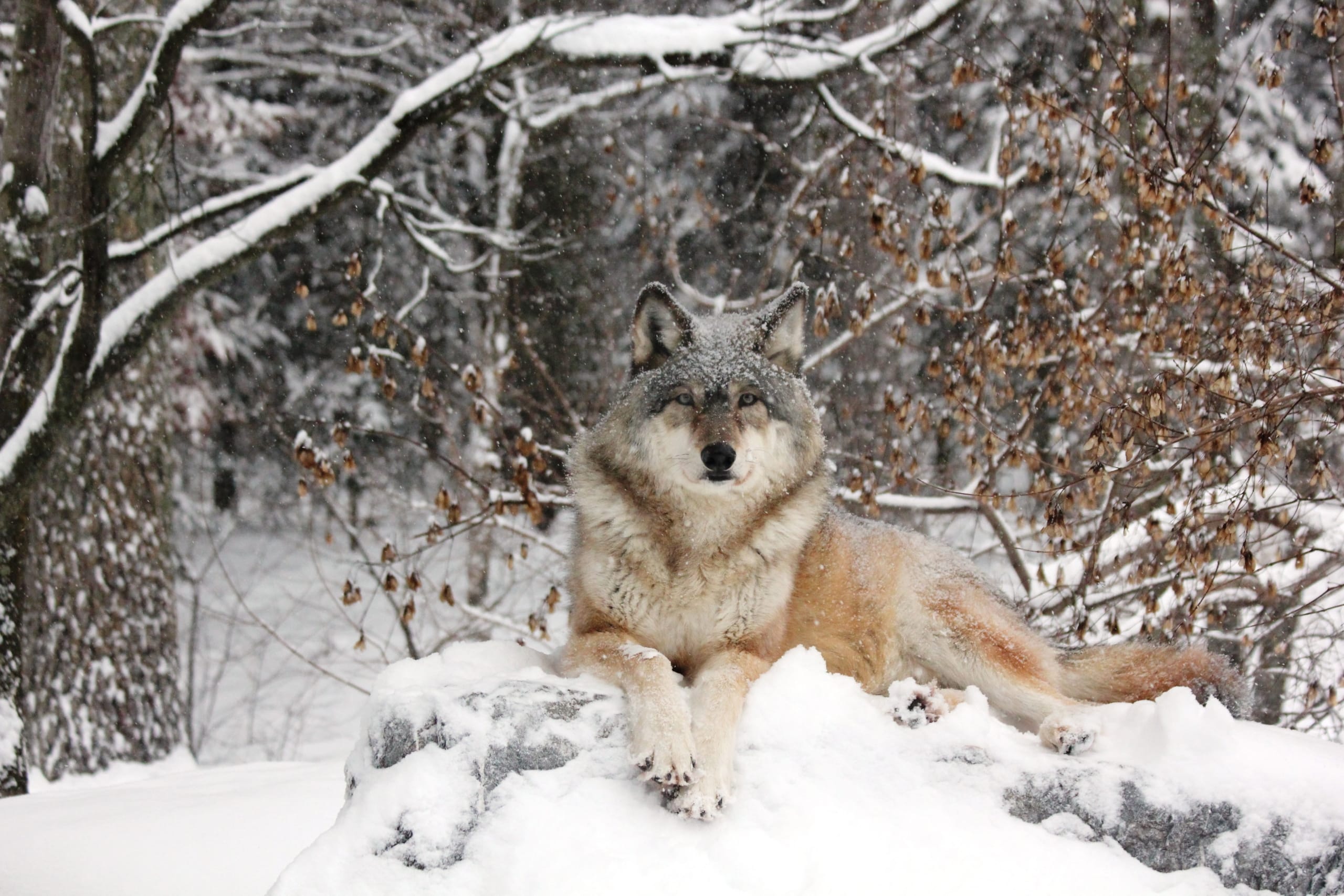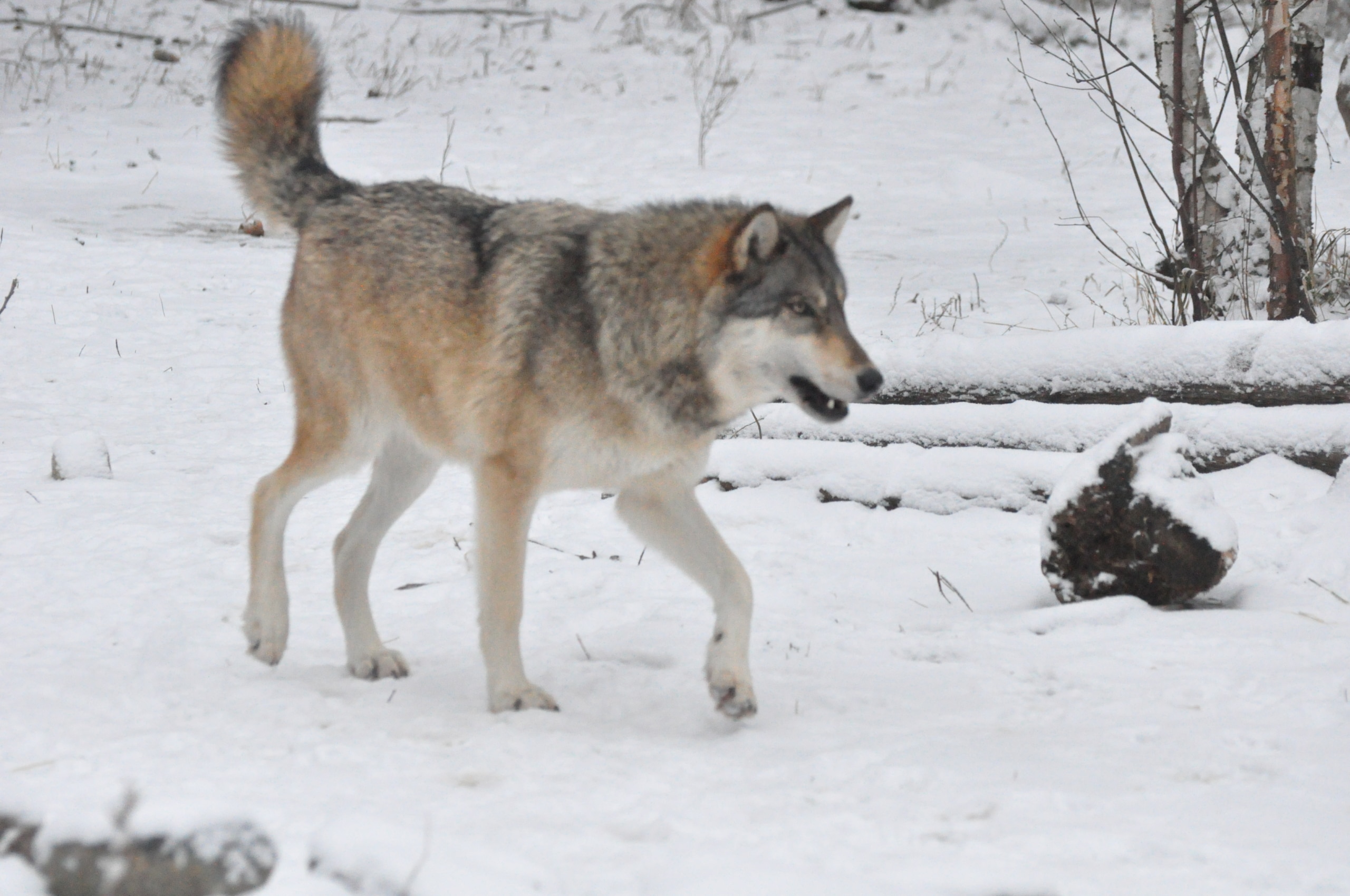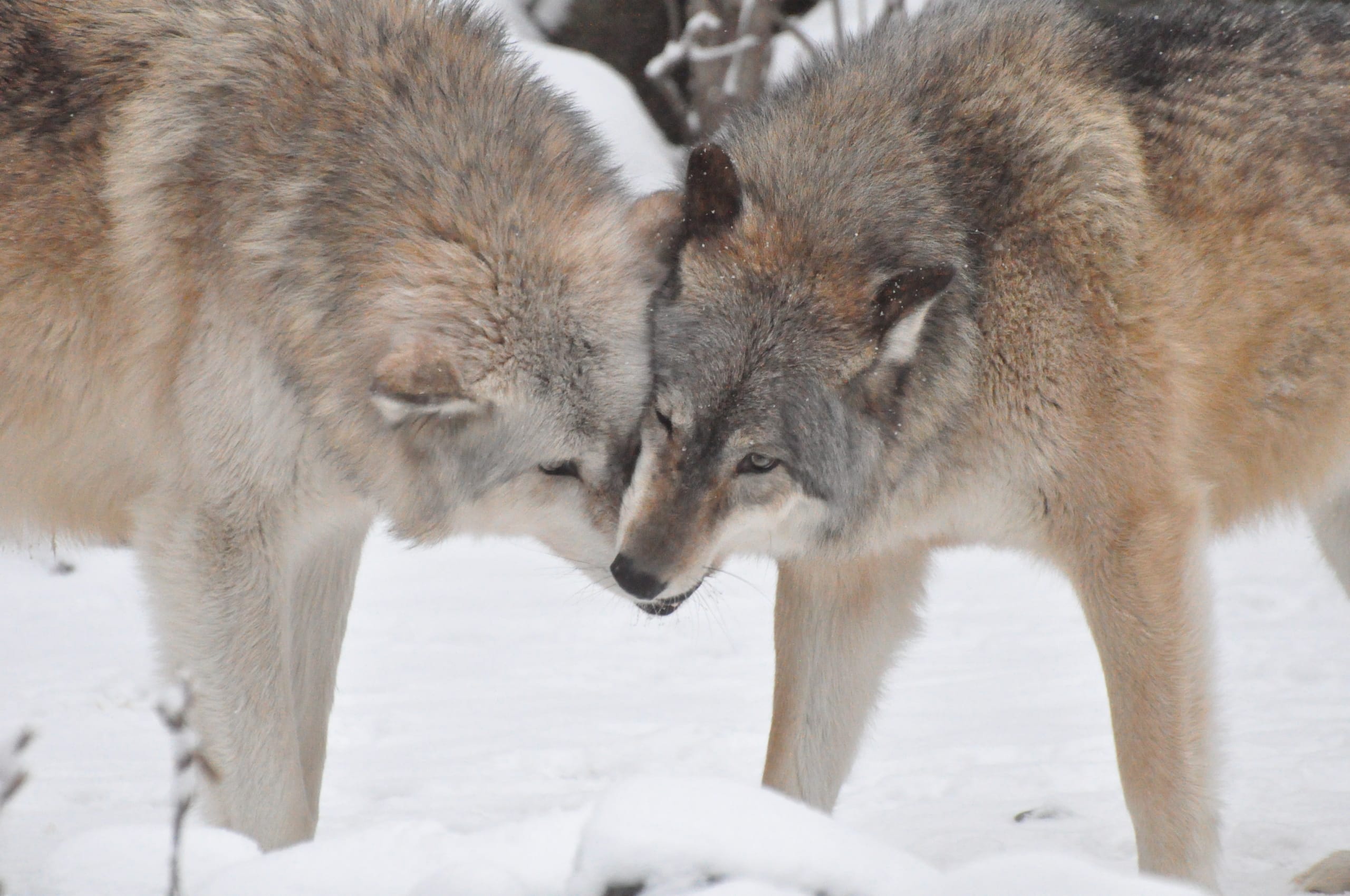As you know, Grizzer lives alone, but he still displays possessive behavior and a desire to cache his food. Why be possessive when you have no pack mates? Scavengers are likely the motivator to protect his food resources. When we feed either pack (Retired or Exhibit), a significant amount of ravens take advantage of the food resources and roost, waiting for the perfect opportunity to land and feed. We also know that Grizzer can display his possession rights against the staff. If staff are picking up scat and step on a cache, this can stimulate Grizzer to display threat behavior defending his cache. He has the right to guard and possess food from the staff, it’s our job to look, listen and learn from the behaviors displayed by the wolves.
Archives
One thing about Denali is that he is extremely alert, especially when food resources are leaving the freezer or entering the enclosure. When training staff about wolf behavior, we focus on three main features:
1. How are they holding their ears
2. How are they holding their tail
3. Where are they focusing their eyes.
These three observations will give a good insight into a wolves attitude and Denali’s typical attitude is “Where’s the meat?”
Today, we aren’t seeing as much focus as we normally do from Denali. He seems to be a bit lethargic and has lost his appetite. For a wolf like Denali, that’s definitely a sign that warrants a call to the Vet clinic. We gathered a fecal sample, have run through the symptoms and our veterinarian has developed a course of treatment to get him back on track.
Aidan’s feeling good and in the best physical shape he’s been in for a while. His pigmentation changes caused by his Discoid Lupus seems to have diminished with no residual discoloration on his nose or lips. He’s an active pack leader and is always aware of the pack’s interactions. It’s been a long trip from the bottom of the rank order as a yearling, to a strong pack leader 6 years later.
Luna has been somewhat of the focus of many mobbings recently, perhaps because of her crazed personality. She’s often the instigator of the many interactions with the pack, but the focus of each interaction may shift back to her every now and then.
Learn more about the behavior of our captive wolves, and wolves around the world through our…
webinars: https://wolf.org/events/seminars/
And Lecture Series: https://wolf.org/events/lecture-series/
Denali shows us an excellent snowplow in this week’s photo, taken by wolf watch participant Steven Houglum. This behavior is commonly done to clean off excess blood or other grit on the wolf’s muzzle, but it has also been seen in a more ‘playful’ context.
Learn more about the behavior of our captive wolves, and wolves around the world through our…
webinars: https://wolf.org/events/seminars/
And Lecture Series: https://wolf.org/events/lecture-series/
Our wolf watch participants witnessed a number of testing displays from Boltz towards Aidan, often involving him charging up to Aidan with a high tail and giving him a direct eye stare. Aidan appears to be ignoring these behaviors however, which could be a sign that Aidan is not concerned with Boltz’ rise in testing.
Learn more about the behavior of our captive wolves, and wolves around the world through our webinars and Lecture Series.
This time of year sled dogs are commonly fed and let out to use some energy across the street from the International Wolf Center. It’s always interesting to see how the wolves react to all of the activity. As you can see in this week’s photo, Grizzer is very alert to the activity across the way.
Learn more about the behavior of our captive wolves, and wolves around the world from your computer through our…
webinars: https://wolf.org/events/seminars/
And Lecture Series: https://wolf.org/events/lecture-series/
Data and photo provided by wolf watch participant Steven Houglum.
Early in the night of our monthly wolf watch program, participant Steven Houglum reported a bark-howl that occurred in the enclosure. It was up the hill in our enclosure, so we could not see which wolf performed it. The bark-howl is a defensive form of communication, often letting its target know that they need to back off, or stay away from a territory. It’s possible that Aidan performed this bark-howl, perhaps to ward off a wild wolf that may have been near the fence.
Learn more about the behavior of our captive wolves, and wolves around the world from your computer through our…
Webinars: https://wolf.org/events/seminars/
And Lecture Series: https://wolf.org/events/lecture-series/
What a difference a year makes…
Boltz’s tail shows a T-1 posture, a sign of intensity, and in this case, it’s involved in a social greeting, but a T-1 tail can also be a sign of aggression, predatory behavior or threat display. In the last month, Boltz has show an increase in intensity, particularly towards Aidan, but Aidan maintains a strong show of leadership and has become more physical in showing Boltz some limits.
In contrast, this post was from a January 2014 log:
“Boltz continues to show tendencies to be the lowest ranking pack member and we have spent a lot of time trying to keep his confidence level up and make sure he takes enough initiative to get his fair share of food. He does seek out the straw beds and is frequently resting with Luna.”
What a difference a year makes…
Denali spent the year avoiding conflict and trying not to be the center of Luna and Boltz’s attention. It appears, that is how he is spending the end of the year as well. The best way to describe Denali is a mild- mannered wolf that likes to avoid conflict and never wants to miss a meal. He is very responsive to his litter-mate, Aidan and as you can see in this photo, he often shows social displays while greeting.

The International Wolf Center uses science-based education to teach and inspire the world about wolves, their ecology, and the wolf-human relationship.

